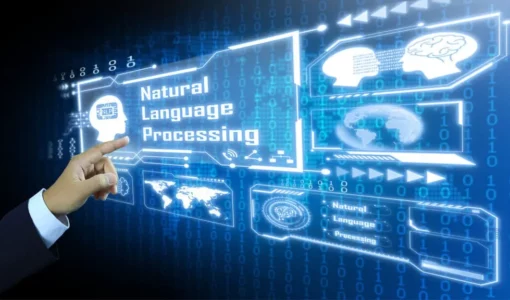
Samantha, the artificial intelligence character in the movie, has her own thoughts and opinions. Samantha is capable of using voice and speech recognition, natural language processing, computer vision, and more. Supervised machine learning refers to classes of algorithms where the machine learning model is given a set of data with explicit labels for the quantity we’re interested in (this quantity is often referred to as the response or target).

Marketing attribution models are traditionally built through large-scale statistical analysis, which is time-consuming and expensive. No-code AI platforms can build accurate attribution models in just seconds, and non-technical teams can deploy the models in any setting. If your marketing budget includes advertising on social media, the web, TV, and more, it can be difficult to tell which channels are most responsible for driving sales. With machine learning-driven attribution modeling, teams can quickly and easily identify which marketing activities are driving the most revenue.
Cultivating Joy in Science
“As impressive as things like transformers are on our path to natural language understanding, they are not sufficient,” Cox said. AI researchers like Gary Marcus have argued that these systems struggle with answering questions like, “Which direction is a nail going into the floor pointing?” This is not the kind of question that is likely to be written down, since it is common sense. “There have been many attempts to extend logic to deal with this which have not been successful,” Chatterjee said. Alternatively, in complex perception problems, the set of rules needed may be too large for the AI system to handle. Deep learning is better suited for System 1 reasoning, said Debu Chatterjee, head of AI, ML and analytics engineering at ServiceNow, referring to the paradigm developed by the psychologist Daniel Kahneman in his book Thinking Fast and Slow. The simulation of human senses is a principal objective
of the AI field.
The Humane Response to the Robots Taking Over Our World – TIME
The Humane Response to the Robots Taking Over Our World.
Posted: Tue, 21 Mar 2023 07:00:00 GMT [source]
RL is beneficial for several real-life scenarios and applications, including autonomous cars, robotics, surgeons, and even AI bots. The State-Action-Reward-State-Action (SARSA) algorithm is an on-policy method. Instead, SARSA learns from the current state and actions for implementing the RL process.
The role of symbols in artificial intelligence
However, the focus here will be on building intuition, and so we won’t be covering the math behind these algorithms in any detail. We’ll also focus on only binary classification problems (i.e., those with only two options) for simplicity. If we set a certain probability as a threshold, we can classify each data point (e.g., each customer) into one of two classes. We could easily extend the linear regression model to this problem by simply taking the square of the dependent variable and adding it as another predictor for the linear regression model. We could do the same for higher-order terms, and this is referred to as polynomial regression. While the above example was extremely simple with only one response and one predictor, we can easily extend the same logic to more complex problems involving higher dimensions (i.e., more predictors).
GOOGL Partner And AI Rival Smashes Earnings As Adobe … – Investor’s Business Daily
GOOGL Partner And AI Rival Smashes Earnings As Adobe ….
Posted: Mon, 17 Apr 2023 19:39:42 GMT [source]
Such systems are highly solicited in the Software-Defined Radio (SDR) platforms. In this paper, a flexible reconfigurable symbol decoder is proposed, and its performance is compared with the existing non-reconfigurable decoder. Specifically, the decoding performances of the EBDT (Ghosh et al., 2021), and NB (Blanquero et al., 2021) classifiers are compared against the MLH decoding performance, for a base system such as QPSK. This only escalated with the arrival of the deep learning (DL) era, with which the field got completely dominated by the sub-symbolic, continuous, distributed representations, seemingly ending the story of symbolic AI.
Building a foundation for the future of AI models
Neuro-symbolic artificial intelligence can be defined as the subfield of artificial intelligence (AI) that combines neural and symbolic approaches. By symbolic we mean approaches that rely on the explicit representation of knowledge using formal languages—including formal logic—and the manipulation of language items (‘symbols’) by algorithms to achieve a goal. It has been proposed that machine learning techniques can benefit from symbolic representations and reasoning systems. We describe a method metadialog.com in which the two can be combined in a natural and direct way by use of hyperdimensional vectors and hyperdimensional computing. By using hashing neural networks to produce binary vector representations of images, we show how hyperdimensional vectors can be constructed such that vector-symbolic inference arises naturally out of their output. We design the Hyperdimensional Inference Layer (HIL) to facilitate this process and evaluate its performance compared to baseline hashing networks.
The key AI programming language in the US during the last symbolic AI boom period was LISP. LISP is the second oldest programming language after FORTRAN and was created in 1958 by John McCarthy. LISP provided the first read-eval-print loop to support rapid program development. Program tracing, stepping, and breakpoints were also provided, along with the ability to change values or functions and continue from breakpoints or errors. It had the first self-hosting compiler, meaning that the compiler itself was originally written in LISP and then ran interpretively to compile the compiler code.
Feature engineering for time series data
They are also able to predict when equipment will break down and send alerts before it happens. Using Akkio’s forecasting, you can accurately predict revenue run-rate based on any number of complex variables in your data. Ultimately, we create large amounts of both data types every day, with virtually every action we take.
The most advanced AI sensory system is compute vision, or visual scene
recognition. Expert – Successful ES systems
depend on the experience and application of knowledge that the people can bring to it
during its development. Backward chaining is best suited for applications in
which the possible conclusions are limited in number and well defined. Classification or
diagnosis type systems, in which each of several possible conclusions can be checked to
see if it is supported by the data, are typical applications.
Inductive Learning of Structural Descriptions: Evaluation Criteria and Comparative Review of Selected Methods
“This is a prime reason why language is not wholly solved by current deep learning systems,” Seddiqi said. Others, like Frank Rosenblatt in the 1950s and David Rumelhart and Jay McClelland in the 1980s, presented neural networks as an alternative to symbol manipulation; Geoffrey Hinton, too, has generally argued for this position. Being able to talk to computers in conversational human
languages and have them Aunderstand@ us in a goal of AI researchers. The main application for natural language systems
at this time is as a user interface for expert and database systems. While why a bot recommends a certain song over other on Spotify is a decision a user would hardly be bothered about, there are certain other situations where transparency in AI decisions becomes vital for users.
What is physical symbol systems in AI?
The physical symbol system hypothesis (PSSH) is a position in the philosophy of artificial intelligence formulated by Allen Newell and Herbert A. Simon. They wrote: ‘A physical symbol system has the necessary and sufficient means for general intelligent action.’
It’s been known pretty much since the beginning that these two possibilities aren’t mutually exclusive. A “neural network” in the sense used by AI engineers is not literally a network of biological neurons. Rather, it is a simplified digital model that captures some of the flavor (but little of the complexity) of an actual biological brain.
Evaluation of the effect of steganography on medical image classification accuracy
Heuristics are necessary to guide a narrower, more discriminative search. Although Turing experimented with designing chess programs, he had to content himself with theory in the absence of a computer to run his chess program. The first true AI programs had to await the arrival of stored-program electronic digital computers. Learn how we simulated the impact of changes in gene expression across a network of genes. See how machine learning can pinpoint the most advantageous target for an effective therapeutic intervention. Real-world settings are constantly changing due to different factors, many of which are virtually impossible to represent without causal models.

Computer programs outside the AI domain are programmed
algorithms; that is, fully specified step-by-step procedures that define a solution to the
problem. The actions of a knowledge-based AI system depend to a far greater degree on the
situation where it is used. Embodied Cognition is a theory that emphasizes the role of the body and the environment in shaping cognition. According to this theory, knowledge is not abstract but rather grounded in sensory-motor experience. Embodied AI systems aim to learn from the interaction with the environment and the feedback from sensors, such as cameras and microphones.
Symbolic artificial intelligence
More broadly speaking, any well-defined CSV or Excel file is an example of structured data, millions of examples of which are available on sites like Kaggle or Data.gov. Deeper layers also allow the neural network to learn about the more abstract interactions between different features. For example, the impact credit score has on a person’s ability to repay a loan may be very different based on whether they’re a student or a business owner.

Nevertheless, concerns about trust, safety, interpretability and accountability of AI were raised by influential thinkers. Many have identified the need for well-founded knowledge representation and reasoning to be integrated with deep learning and for sound explainability. Neural-symbolic computing has been an active area of research for many years seeking to bring together robust learning in neural networks with reasoning and explainability via symbolic representations for network models. In this paper, we relate recent and early research results in neurosymbolic AI with the objective of identifying the key ingredients of the next wave of AI systems. We focus on research that integrates in a principled way neural network-based learning with symbolic knowledge representation and logical reasoning.
- If this is the first time you used this feature, you will be asked to authorise Cambridge Core to connect with your Google Drive account.
- With more linguistic stimuli received in the course of psychological development, children then adopt specific syntactic rules that conform to Universal grammar.
- Similarly, they say that “[Marcus] broadly assumes symbolic reasoning is all-or-nothing — since DALL-E doesn’t have symbols and logical rules underlying its operations, it isn’t actually reasoning with symbols,” when I again never said any such thing.
- Several ES development environments have been rewritten
from LISP into a procedural language more commonly found in the commercial environment,
such as C or C++.
- “With symbolic AI there was always a question mark about how to get the symbols,” IBM’s Cox said.
- The greatest weakness of neural networks is
that they do not furnish an explanation for the conclusions they make.
Because forecasting is used to predict a range of values, as opposed to a limited set of classes, there are different evaluation metrics to consider. There are a number of metrics you can use to evaluate the performance of a model. After making any model in Akkio, you get a model report, including a “Prediction Quality” section.
- Click here to learn more about bias in machine learning and how to minimize it.
- In contrast, a multi-agent system consists of multiple agents that communicate amongst themselves with some inter-agent communication language such as Knowledge Query and Manipulation Language (KQML).
- We’ve highlighted some special considerations to keep in mind when working with time-series data.
- One advantage of the hyperdimensional architecture for inference is how it can be easily manipulated.
- While a human driver would understand to respond appropriately to a burning traffic light, how do you tell a self-driving car to act accordingly when there is hardly any data on it to be fed into the system.
- Symbolic artificial intelligence, also known as Good, Old-Fashioned AI (GOFAI), was the dominant paradigm in the AI community from the post-War era until the late 1980s.
What is symbolic AI vs machine learning?
In machine learning, the algorithm learns rules as it establishes correlations between inputs and outputs. In symbolic reasoning, the rules are created through human intervention and then hard-coded into a static program.

